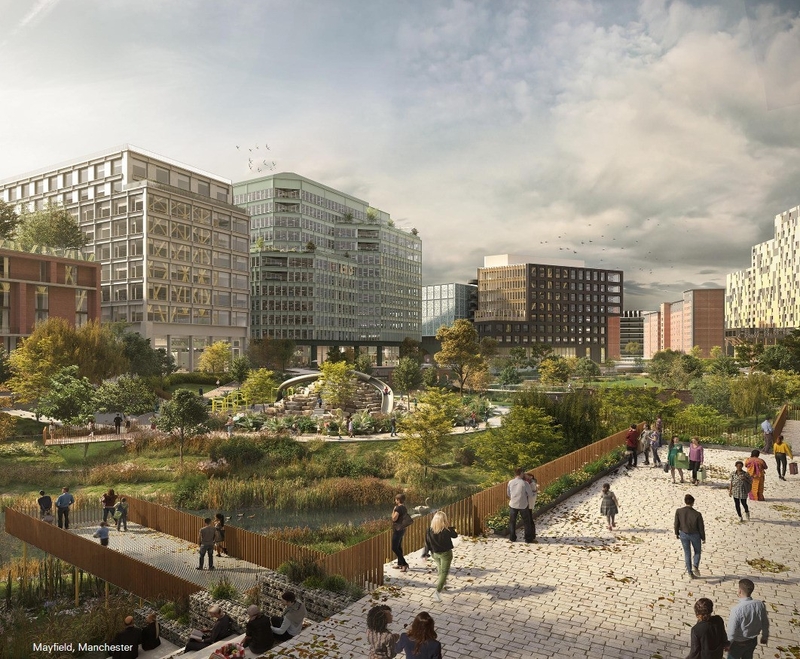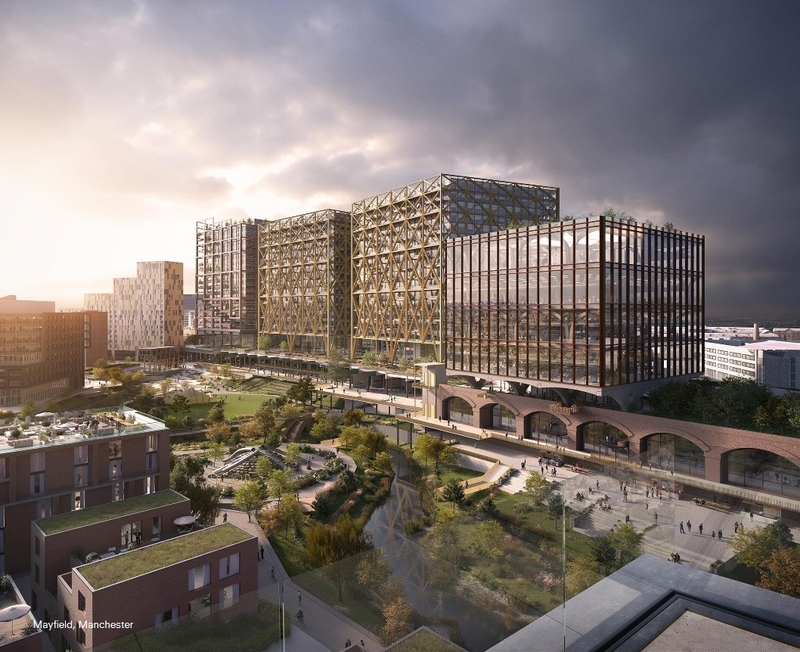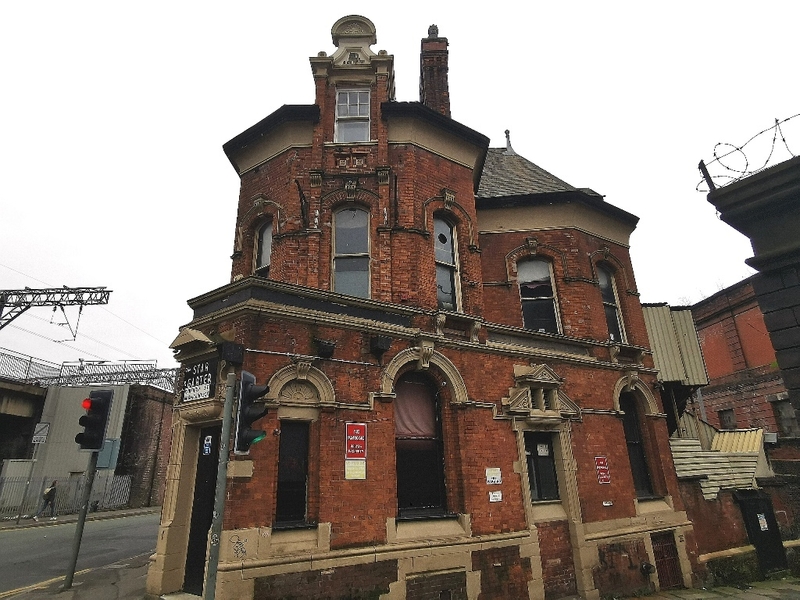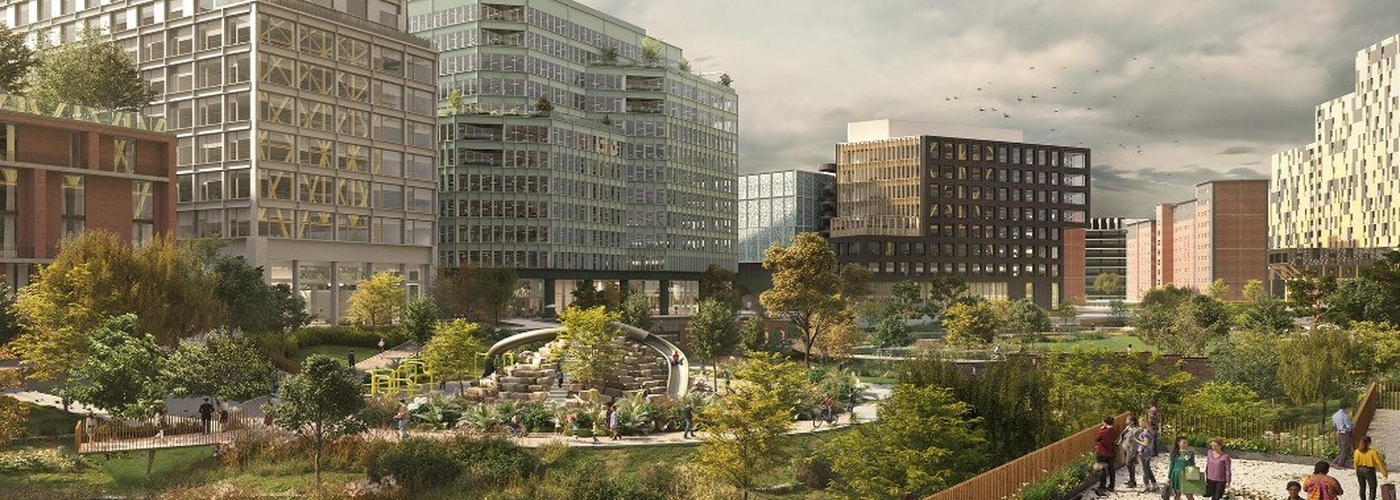Jonathan Schofield on a regeneration project that has become a massive cultural asset
Thirty acres in a central part of a city is a big space. Take all the area between Deansgate and Cross Street and from John Dalton Street to Manchester Cathedral and the Corn Exchange and that’s about the scale we’re talking.
Now move east and think Piccadilly Gardens, but take it from the sixties buildings at the bus station to Oldham Street.
Those scales should give you some idea of the Mayfield regeneration site, which is 30 acres, and its planned park, which will be the 6.5 acres.
The Partnership's approach to this huge site has been exemplary, open, clear-headed and imaginative
The lead on Mayfield is ‘specialist regeneration’ developer U+I. They are part of the Mayfield Partnership, a public-private venture, which also includes LCR (part of the Department of Transport), Manchester City Council, Transport for Greater Manchester.
The stats around Mayfield are huge. The overall investment might be as much as £1.4bn which will deliver 1,500 homes, 155,000 sqm of office space, a 650-bedroom hotel, retail and leisure facilities and that new city park.
The way this is being done involves retaining much of the 1910 Mayfield Station with its vast, cavernous, and awe-inspiring brick vaulted depot, and freeing the River Medlock from its imprisoning culvert.
These two elements are the main assets of the site. On and around these the new work will take place. On the fringe of the site, as we wrote a couple of weeks ago, the Mayfield Partnership has acquired the Star & Garter, a building of 1877, which will continue to run as an incubator for the region’s music.
The pictures on this page show what the new city centre district might look like. For many the park will be the key. It will be city’s first proper park since Hulme Park opened 20 years ago (read more here). A main feature, as mentioned, will be the exposed River Medlock. An element of drama will be added by the colonnade of columns holding up the depot on the northern side of the park.
Work will begin early this year subject to planning consent. The initial planning proposal also seeks consent to build a thirteen-storey office building, a nine-storey commercial office space and a 581-space multi-storey car park.
The first, second, third and fourth complaints from residents and workers about the city centre is about green space. The Mayfield plans are a big step in the right direction.


Other figures released reveal the potential of the three decades abandoned site as a focus for events.
330,000 people came to Mayfield in 2019 for the mixed programme of cultural, community and business shows. The biggest boost was with Depot Mayfield, a partnership with event specialist Broadwick Live, which became the new home of The Warehouse Project (WHP). Almost a quarter of a million people (225,000) attended the WHP nights. Somebody with a calculator has worked out that added £10m to the local economy. Manchester Pride attracted 35,000 guests. There were countless other events as well.

James Heather, Development Director for U+I and the Mayfield Partnership, said: “There’s a fundamental link between culture and regeneration and providing a home for some of Manchester’s best cultural events has helped us to reintroduce this forgotten area of the city to its people.
“2019 provided many highlights and brought thousands of people to experience Mayfield for the first time. Throughout the year we’ve continued to work closely with local communities and stakeholders to reinvigorate the public opinion of Mayfield and understand what they want and need from the area’s regeneration.
“This is just the beginning of our work to transform this place and with our plans for the first phase of development with Manchester City Council, we’re excited about that 2020 will bring. It’s without question that culture will continue to be a massive part of Mayfield as we move forward.”

This is all good news for regular users of the city centre. It’s good news for people who like to see trees. It’s good news for a sensitive approach to the heritage assets of a city.
The Mayfield Partnership looks like it might deliver something very valuable for Manchester. Certainly its approach to this huge site has been exemplary, open, clear-headed and imaginative. Let’s see how the reality turns out, but it’s all looking good at present.
















